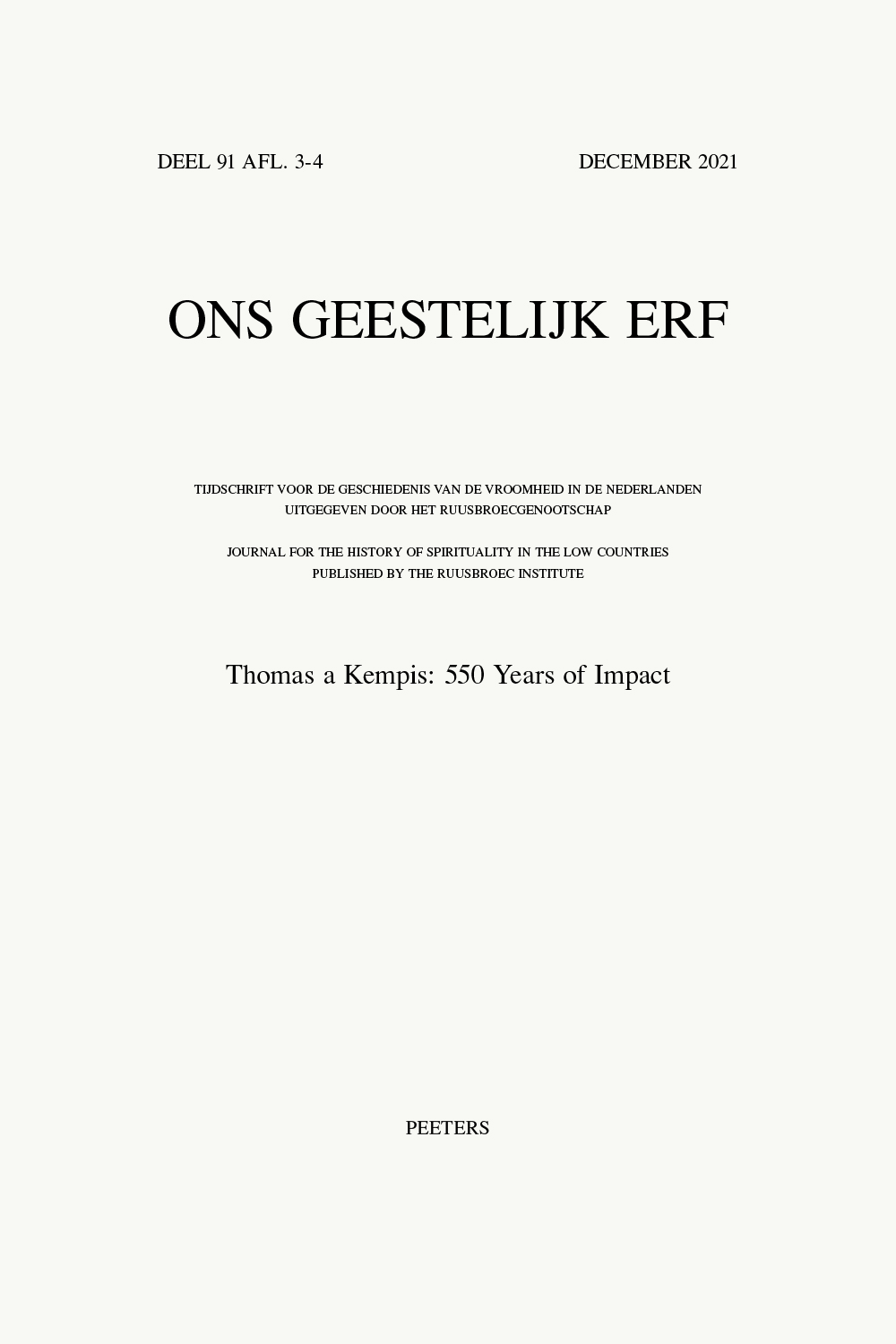 previous article in this issue previous article in this issue | next article in this issue  |

Preview first page |
Document Details : Title: Gedecodeerde handschriften uit tertiarissenconventen in Amsterdam en Haarlem Subtitle: Boekenbezit versus boekproductie Author(s): HÜLSMANN, Margriet Journal: Ons Geestelijk Erf Volume: 74 Issue: 1-2 Date: maart-juni 2001 Pages: 153-180 DOI: 10.2143/OGE.74.1.616449 Abstract : This paper investigates the issue of how fifteenth-century manuscript production relates to first (or early) ownership of manuscripts. The focus is on a number of convents of Tertiaries in Amsterdam and Haarlem. It is often assumed that an early ownership inscription also indicates that the book was copied at that particular place. An investigation of the border decorations shows that this is often not the case. From a database of circa 400 decorated manuscripts originating from the northern part of the County of Holland (e.g. Haarlem, Amsterdam, Egmond, Hoorn), I singled out thirty-five manuscripts which had belonged to the book collections of these convents: two manuscripts, dated 1434 and 1450, contain a colophon stating that they were copied in the Convent of St Paul in Amsterdam (Brethren Tertiaries); twenty-seven contain an ex libris inscription; and seven contain internal evidence pointing to one particular convent (see Tables 1 and 2). In addition, two dated manuscripts (1440 and 1441) were also singled out, although they could not be located via a colophon or an ex libris inscription. Nevertheless they can be associated with the Amsterdam group of convents on the basis of their decorations, and one also on the basis of its content. Because of their dates and their decoration, these two manuscripts play a central role in our understanding of the development of a specific decorative style, the so-called mask-penwork, which occurs in ten of the Amsterdam (total 20) and one of the Haarlem (total 15) manuscripts. We only know for two of the thirty-five manuscripts where they were actually written, namely at the Convent of St Paul. One of these (1434) remained at the place of production (ex libris). The other (1450), a Legenda Aurea, was probably made for the Convent of St Margaret in Amsterdam (on the basis of its decoration and the emphasis placed on the life of St Margaret). The latter manuscript shows so-called mask-penwork and the earlier one an obvious precursor of the mask-style. The question is where the thirty-three manuscripts without a colophon, all in the possession of female convents, were produced. Eight of the eighteen remaining manuscripts of the Amsterdam group are decorated with mask-penwork or a closely related style, pointing to the origin of the decoration at St Paul’s. This probably means that the manuscripts were also written at this convent, which obviously played an important part in the production of books for female convents. The manuscripts from the Haarlem group show more varied and elaborate styles, evidence for the flourishing book production in that town. Besides penwork, four books also contain painted illuminations. Most likely the books in the possession of the convents of Tertiaries, especially the luxurious ones, were produced in town by secular artisans. Haarlem was the centre for book production in that region in the fifteenth century, working for ‘export’. Four of the manuscripts of the Amsterdam group were produced in Haarlem. |
|


